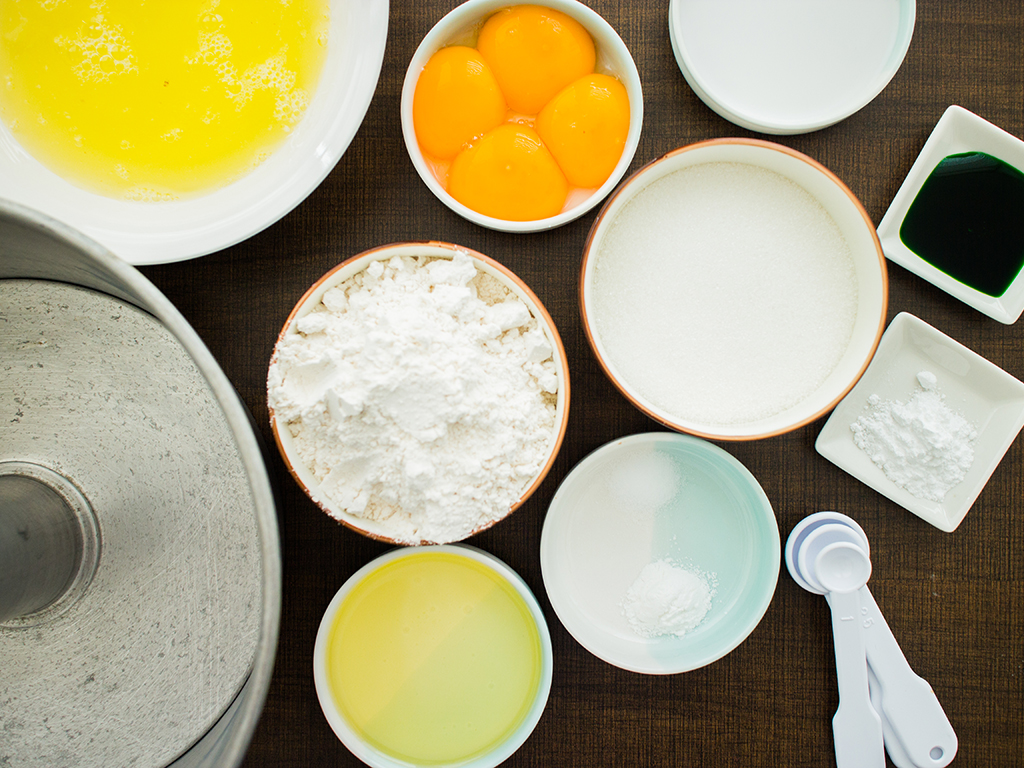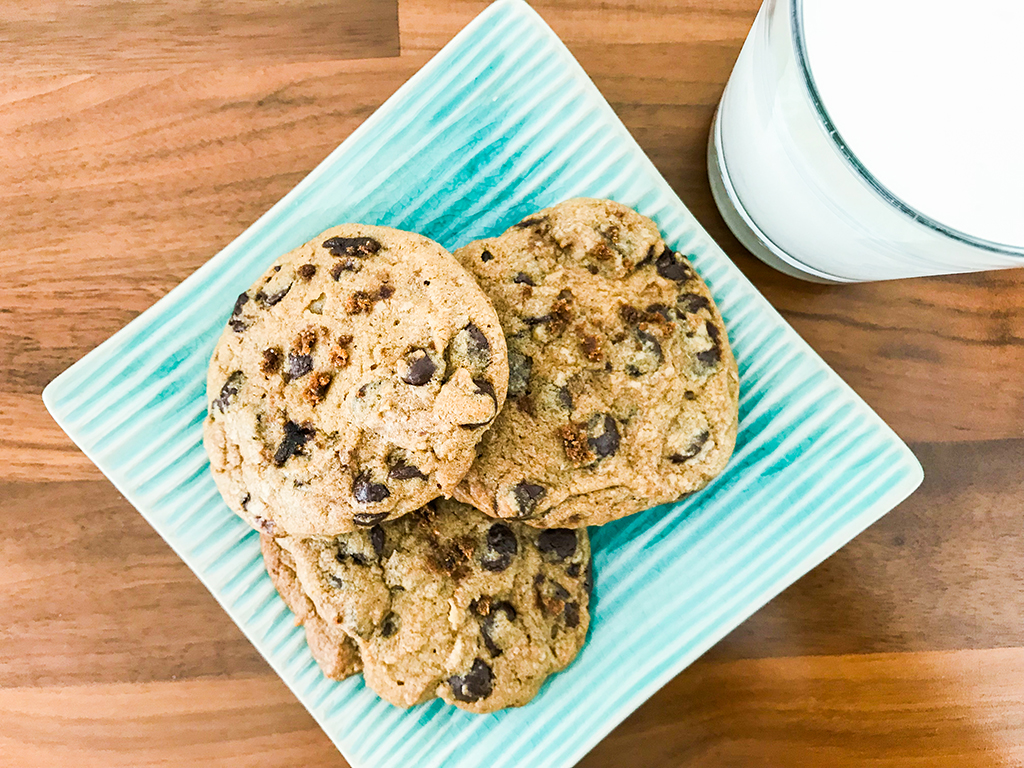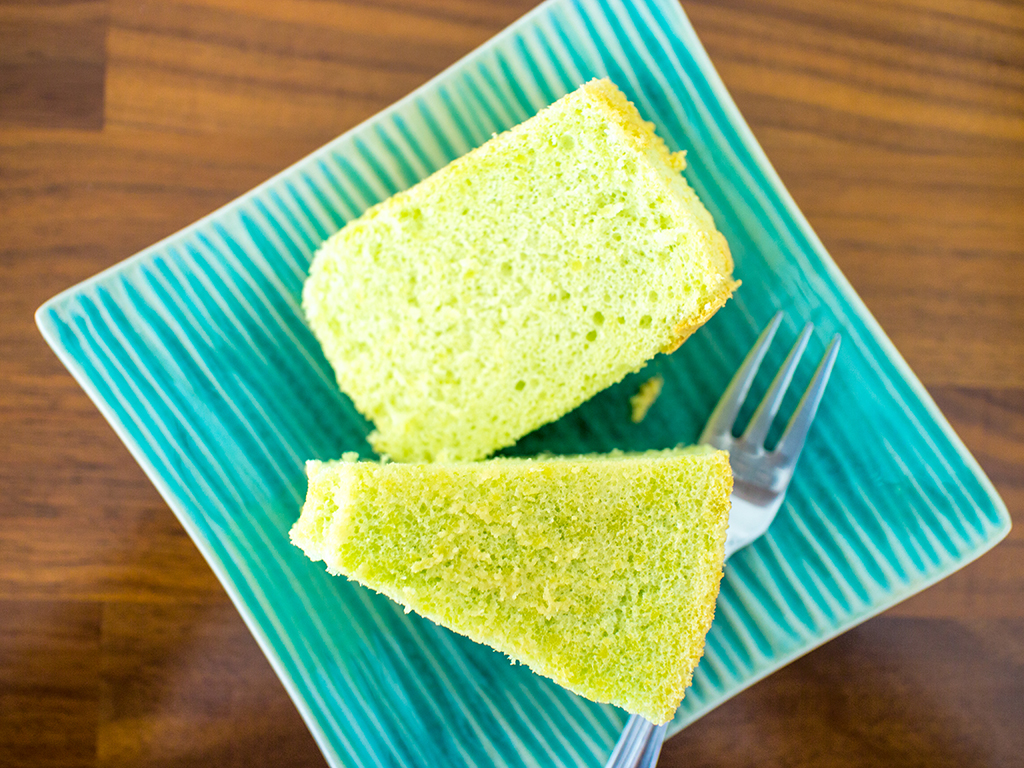
Mention pandan chiffon cake and you’re bound to see eyes glaze over at the thought of a moist and fluffy cake, slowly savoured to enjoy every bit and bite of its delicate flavour. It’s like chewing on a flavoured cloud – one you simply can’t stop eating. And while chiffon cake comes readily available in a variety of flavours, there is no doubt that the pandan chiffon cake is the one to rule them all, at least on our home turf.
Considering how widely available and affordable chiffon cakes are throughout Malaysia, you would be forgiven to think it’s a local invention. After all, it’s been a staple of local bakeries, whether in urban cities or in villages since, well, as far back as we can remember. However, chiffon cakes were invented in 1927 by a Californian insurance salesman. Henry Baker kept his recipe a secret for a mindboggling 20 years before selling it to an American food manufacturer. It was released in a Betty Crocker pamphlet to the masses the following year, and chiffon cakes have never looked back since.
We don’t know exactly when chiffon cakes arrived in this part of the world, but when it did, some adventurous soul must have added a bit of pandan to it to suit our local taste buds, and the rest, as they say, is history. In fact, the pandan chiffon cake is such a classic local cake that in 2017, CNN even named it the national cake of Malaysia and Singapore.
Putting the chiffon in chiffon cakes
Unlike most traditional cakes, chiffon cakes use vegetable oil instead of butter, which helps the cake retain its moistness. To get the batter nice and fluffy, egg whites are aerated and then folded into the rest of the batter. It all sounds a little bit complex, and probably was back in the day before the invention of electric mixers. Nowadays though, all you need is a socket, a tube pan and a recipe you can follow to the T to make the perfect chiffon cake. A word to the impatient though – you do not want to skip any steps with this cake. In fact, when it comes to baking any cake, skipping steps is never the best idea.
To give our pandan chiffon cake an even richer local flavour, we swapped its liquid content with good old coconut santan. However, as coconut milk is denser than water or juice, our pandan chiffon cake is a little less fluffy compared to your typical store-bought chiffon cake. However, the bonus comes in the form of a savoury-sweet more-ish flavour you just can’t get enough of.
There’s also a bit of an unusual old-timer trick you’ll have to perform once the chiffon cake is out of the oven. You’ll know what it is when you get there. Come on, it’s time to get our chiffon on.
Ingredients
- 160g cake flour
- ½ tsp baking powder
- ¼ tsp salt
- 265g egg whites, roughly from 7 eggs
- 145g granulated sugar
- 4g (1 tsp) cream of tartar
- 64g egg yolks, roughly from 4 eggs
- 63g vegetable oil
- 7g (1 tsp) pandan emulco
- 70g coconut cream
Special equipment
- Aluminium tube pan/chiffon pan with a removable base
- Electric mixer
- Metal mixing bowl
Method
- Preheat oven to 175°C.
Part 1: sifting
- In a regular mixing bowl, sift cake flour, baking powder and salt three times. This helps aerate the flour and prevent lumps which can weigh down your batter. You’ll notice that the flour gets a little fluffier with each sift. Set aside.
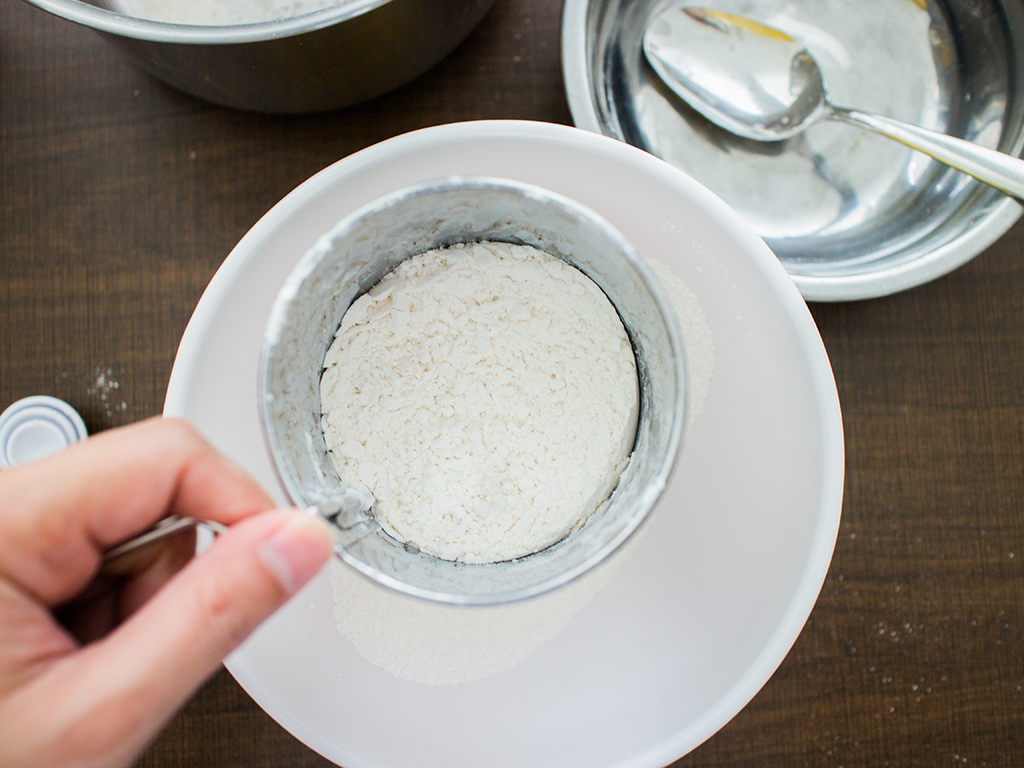
Part 2: egg whites
- To make meringue: in a metal mixing bowl, beat your egg whites with an electric mixer until it is bubbly and foamy right through.
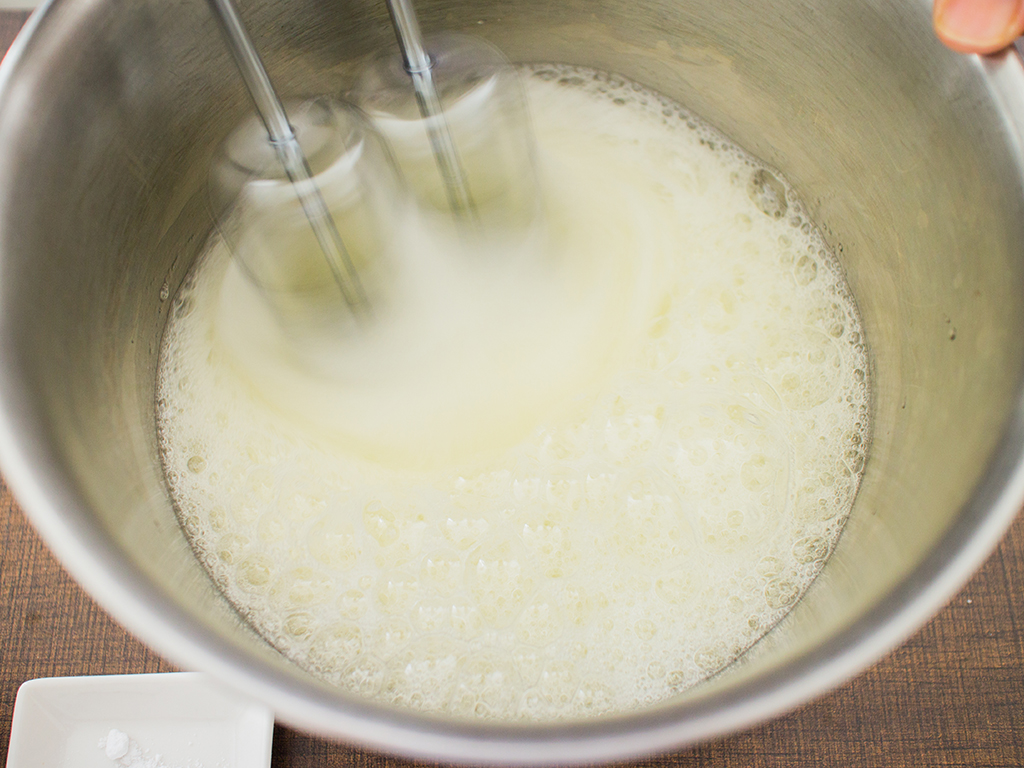
- Add cream of tartar and continue beating until peaks start to form. Cream of tartar helps to stabilize the egg whites. If you’re an expert at making meringues, you can omit the cream of tartar if you prefer.
- Add sugar 1 tablespoon at a time to your egg whites and continue beating until the egg whites are glossy and the peaks are firm but not stiff – you are not making pavlova. Set aside.

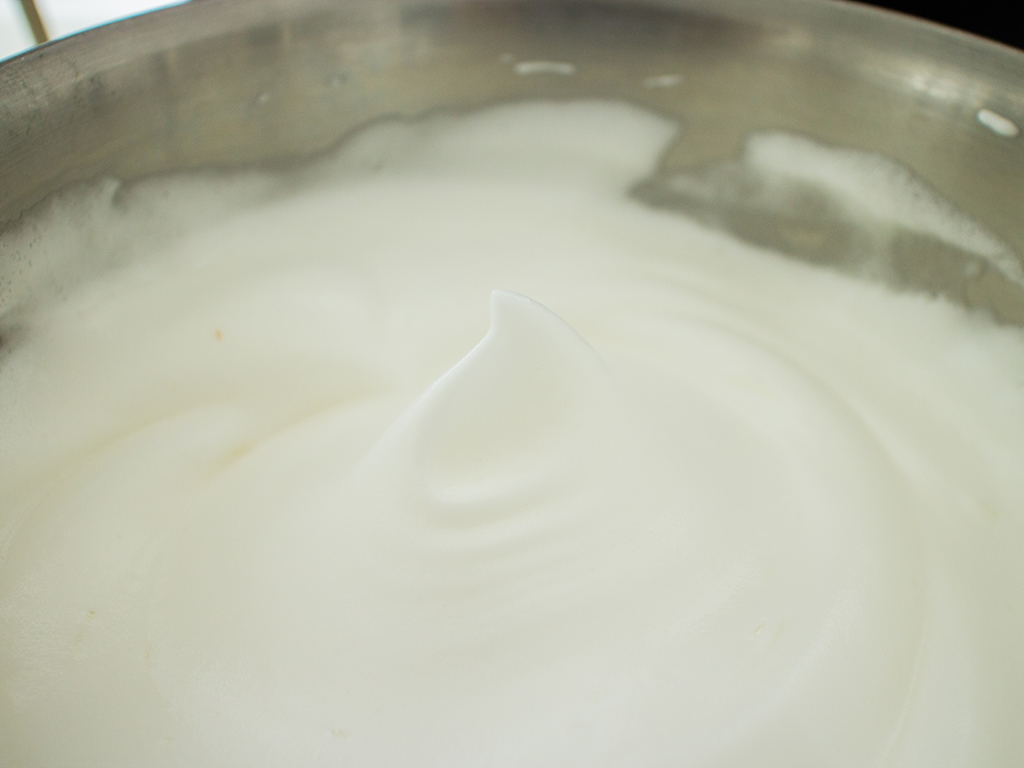
Part 3: batter
- In a separate mixing bowl, add egg yolk, oil and coconut milk and beat until smooth.
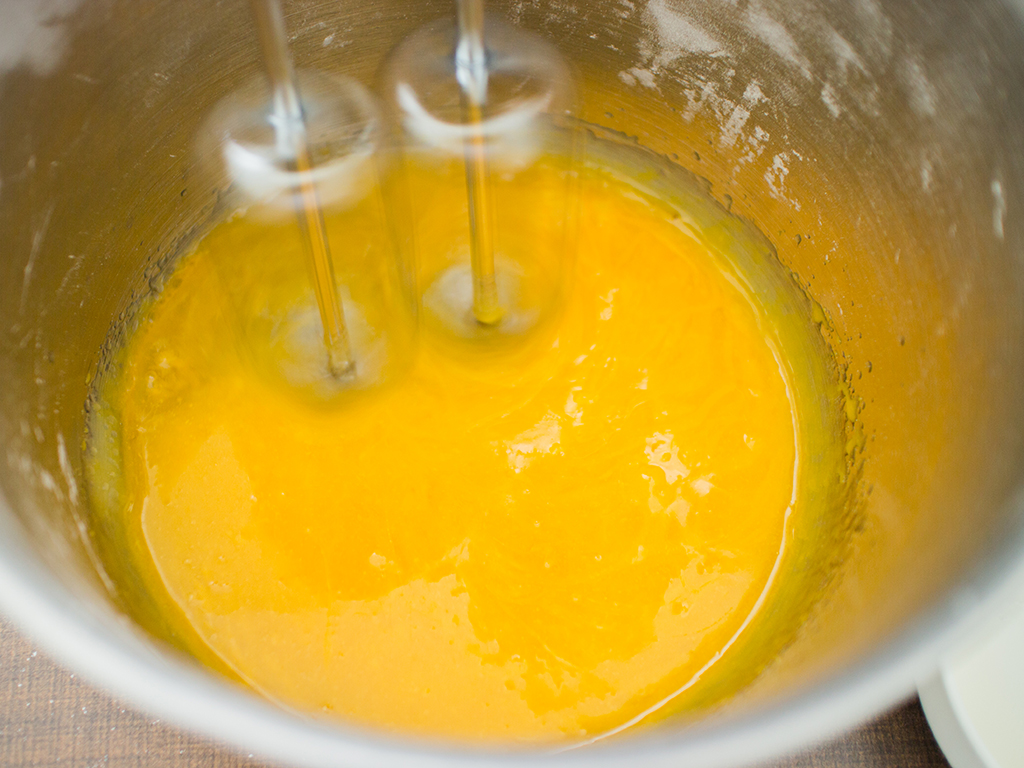
- Next, add the pandan emulco and continue mixing until the colour has evenly spread. You should have a lovely lime green-toned and pandan scented mixture.


- Add in the thrice-sifted flour into the egg yolk and pandan mixture. Use your mixer to combine the ingredients thoroughly. As coconut milk is quite thick, what you’ll end up with is a dense, thick and rather lumpy looking batter.

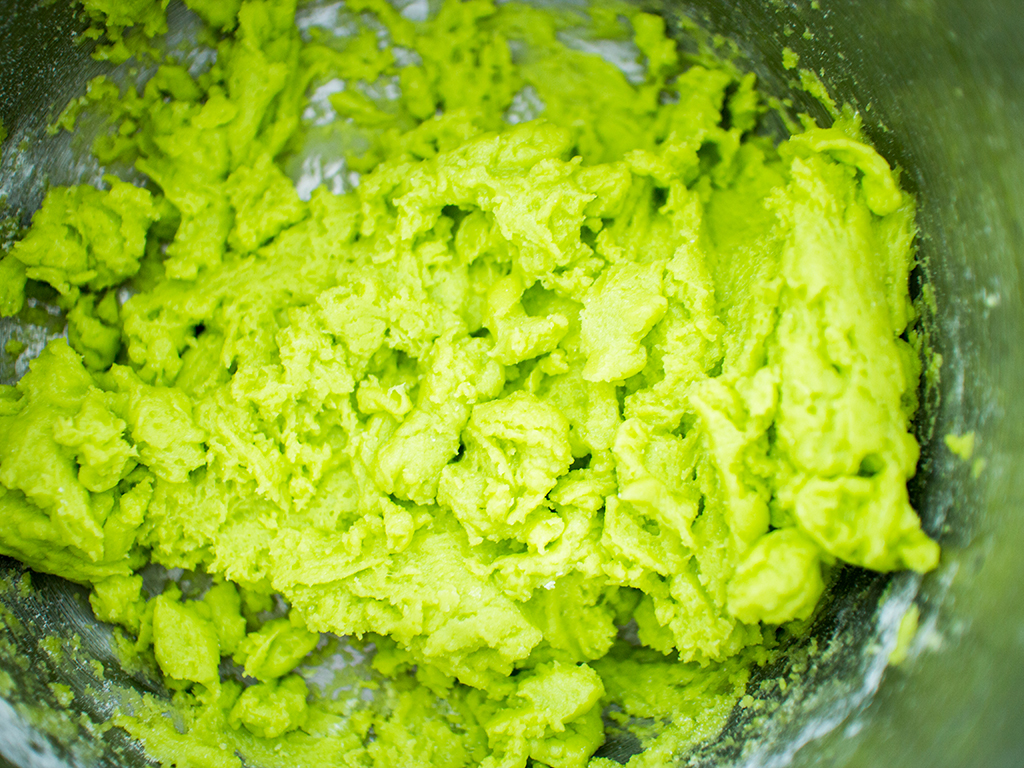
Part 4: combining the ingredients
- Next, and this is where things can get a little tricky, add in 1/3 of the egg whites into the batter, gently folding it in. Once it looks more or less even, use the mixer once again to mix the batter until smooth and thoroughly combined.
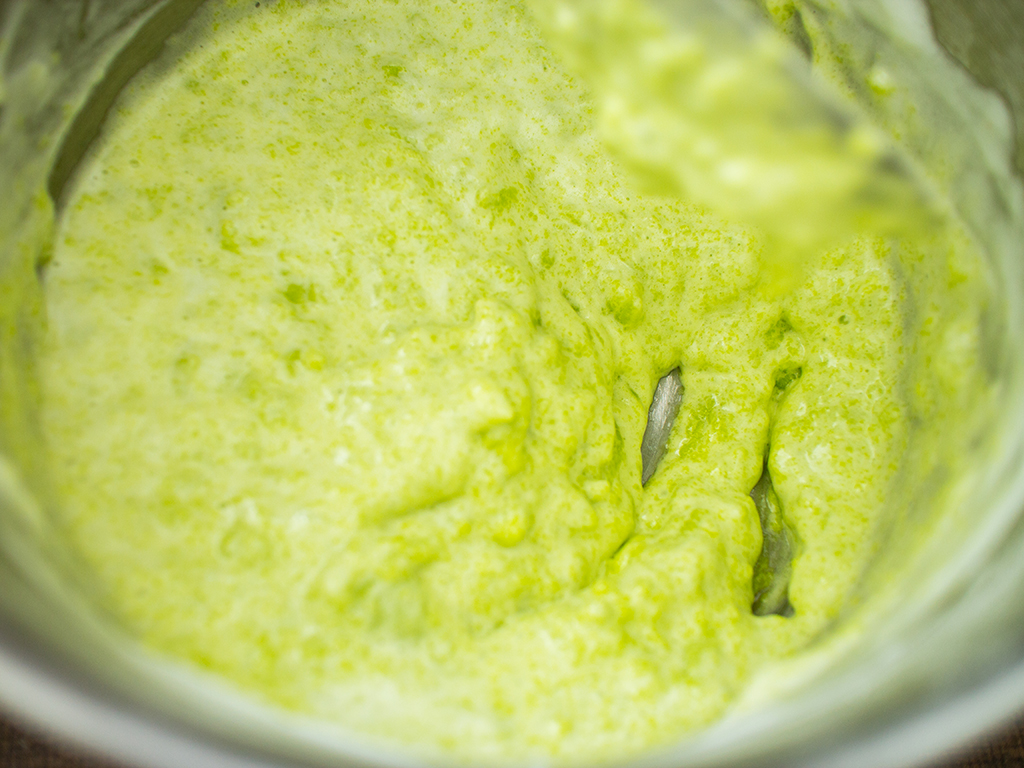
- Add in another 1/3 and this time, gently fold the egg whites in. Do not use the mixer. Once combined, add in the final 1/3rd of the egg whites and gently fold in until smooth and just combined.
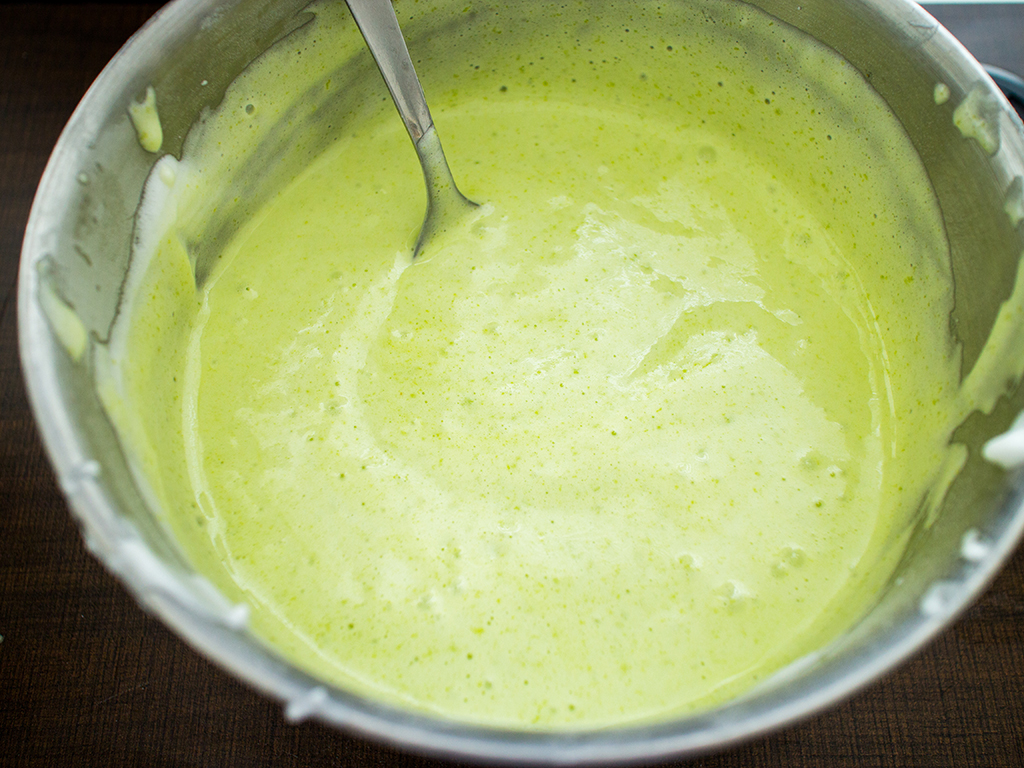
Part 5: baking & resting the pandan chiffon cake
- Pour the batter into an ungreased tube pan bake in the oven for 1 hour and 15 minutes.

- Once the cake is done in the oven, take it out and invert the tube pan over a bottle, cake plate or tray until it is completely cool or anywhere with a flat surface that is slightly elevated.
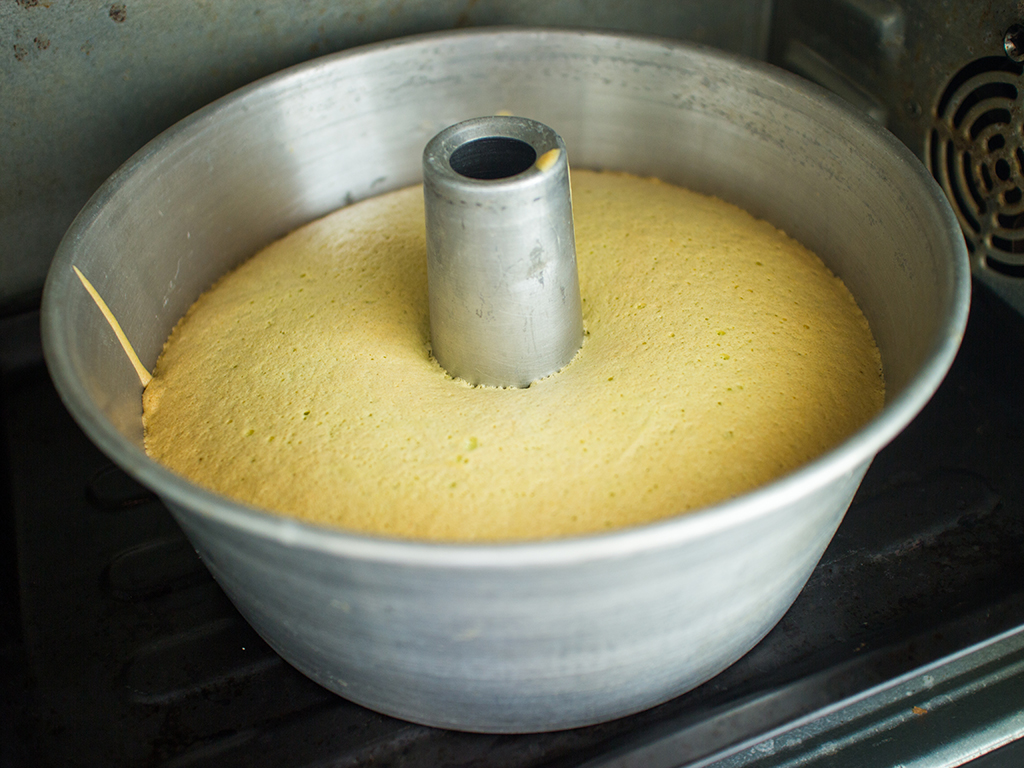

- Let it rest and completely cool while upside down. Inverting the chiffon cake helps it to remain fluffy as the cake will not flatten and collapse on itself as it cools and the hot pockets of air shrink. Cooling times will vary according to your room temperature.
- Once the cake is cool, turn the chiffon pan right side up. You’ll notice that the edges have begun to separate, but not sufficiently to remove the cake just yet. Run a knife along the edges of the pan to separate the cake from the walls of the pan.

- Invert the cake once again (so the base is on top) and remove the outer part of the pan. Then, run a knife under the base of the pan, separating the cake and allowing it to gently fall onto a plate. Be quick, as you don’t want the cake to break apart. If part of the cake has been detached while another remains stuck to the base for too long, your cake can and will break. If you are a little cautious of your skill to execute this part swiftly, turn you cake right side up again and run the knife along the base. Then, while gently but firmly supporting your cake, invert the base with the cake over your plate, allowing the cake to slowly drop onto the plate, before removing the base completely.
- Cut into wedges to serve.

Extra tips
- Stick with mild flavoured vegetable oils for this recipe, such as grapeseed oil, canola or sunflower oil. Olive oil will affect the end flavour of your pandan chiffon cake.
- Emulco is a paste with highly concentrated flavour and a little bit goes a long way. Using emulco allows you to incorporate stronger natural flavours into your cooking or baking without having to use a higher quantity of that specific ingredient, in this case 1 tsp of pandan emulco instead of, say, 2 tablespoons of pandan extract or a quarter cup of pandan juice. Emulco is available in baking stores, although supermarkets with a good baking section will also carry this ingredient.
- You can replace emulco with pandan extract or pandan juice but we do not have the exact swapping ratios, so you’ll have to go by taste. Please bear in mind that you will need to reduce the amount of liquid used (in this case, coconut milk) accordingly to maintain balance in this recipe. This may affect that extra rich flavour and texture the coconut milk brings to this recipe.
This pandan chiffon cake is great served as is. For extra decadence, serve it with a drizzle of coconut sugar or gula Melaka syrup and some freshly grated coconut. Yum!
How did you like our take on this classic Malaysian chiffon cake? We want to see how your pandan chiffon cake turns out so don’t forget to share your pictures with us by using the #butterkicap hashtag. Let’s go make some now, or whip it up for a special occasional like Hari Raya. But, well, before we serve our guests, we’re going to have to make a batch to test for ourselves first right?

